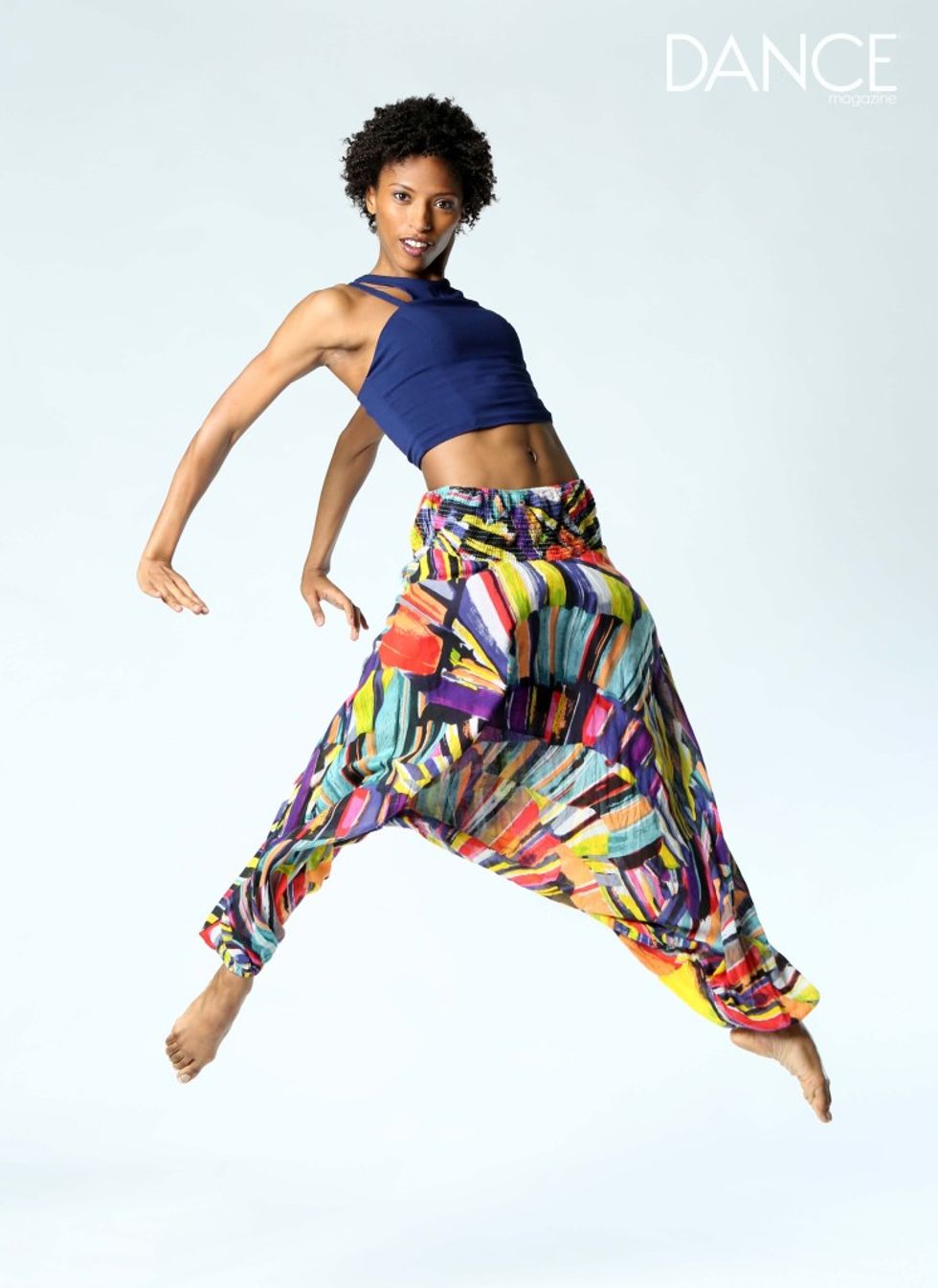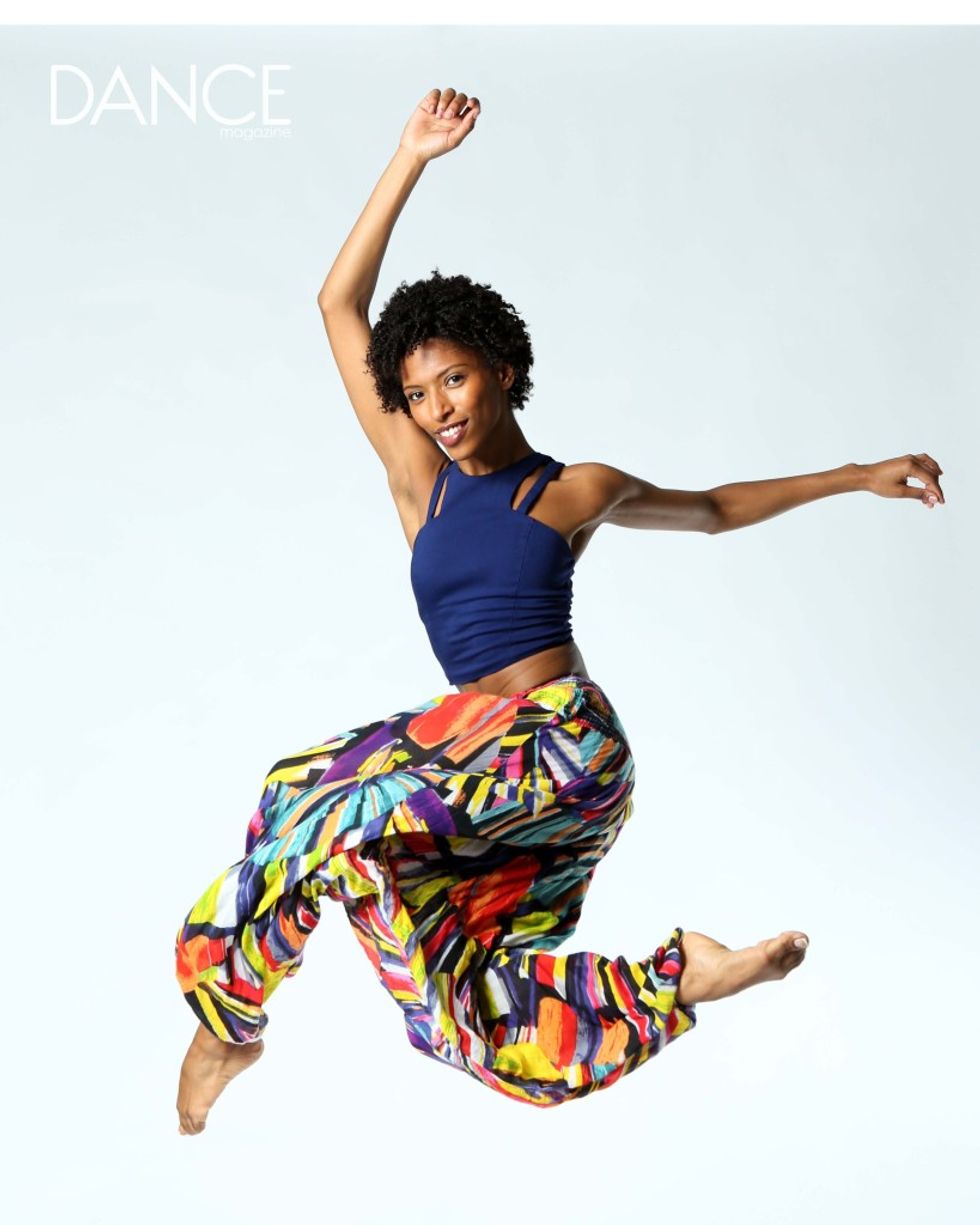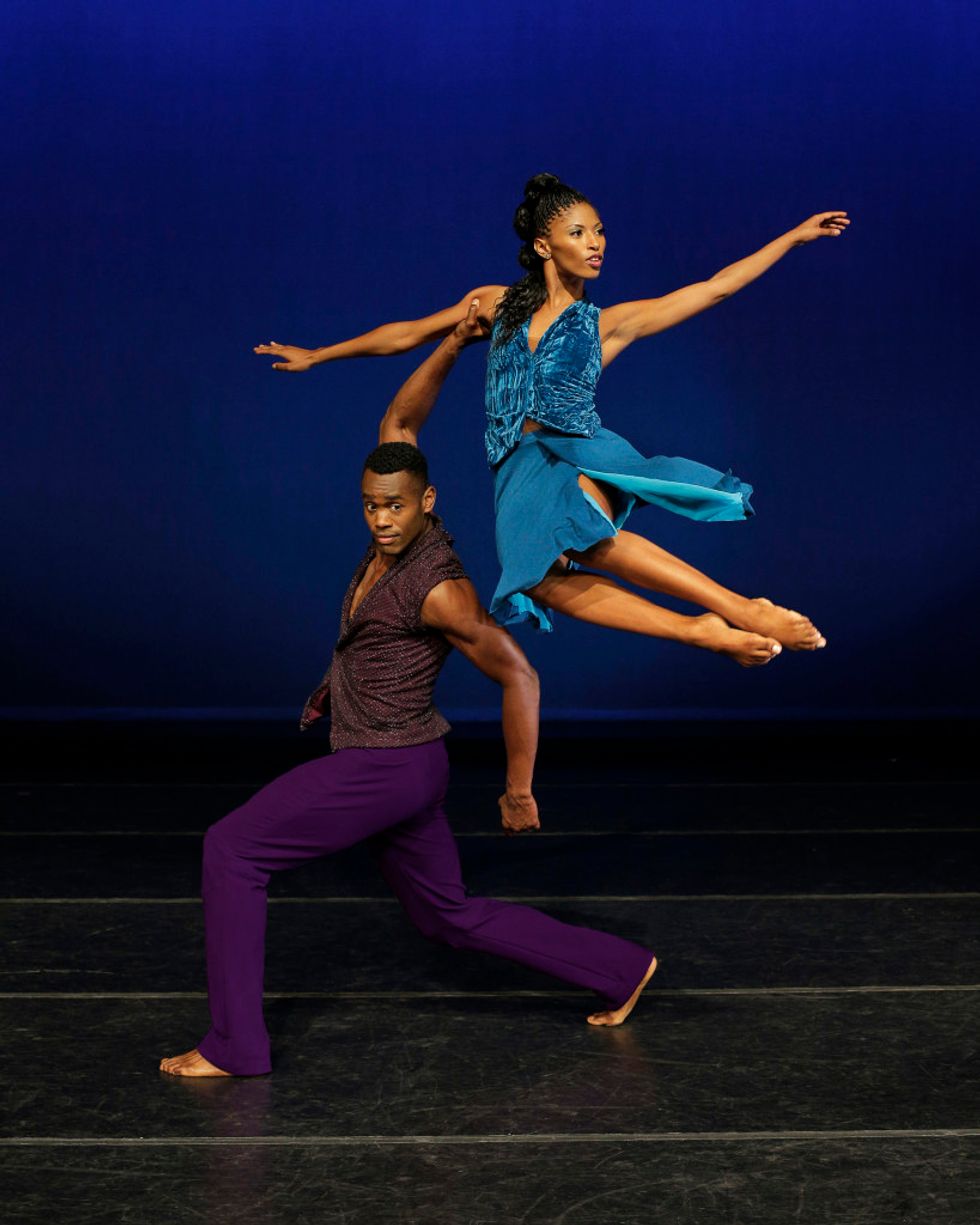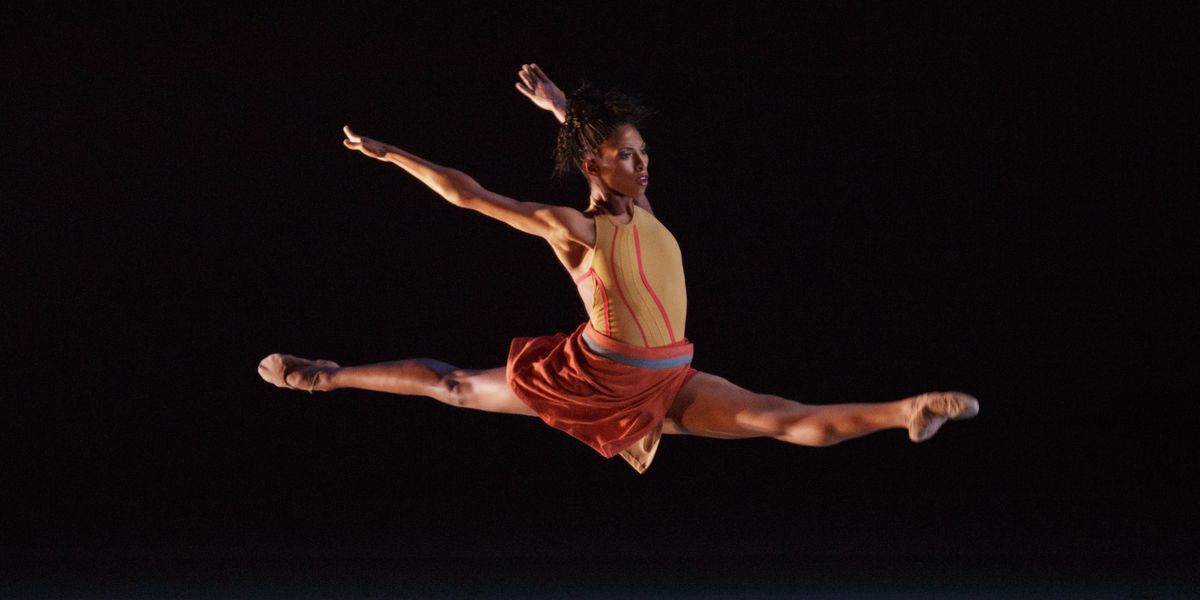The Accidental Star: Ailey's Jacqueline Green
The first time Jacqueline Green auditioned for Alvin Ailey American Dance Theater, she was 16. She’d taken her first dance class just three years earlier—when teachers had to physically hold her foot to teach her a tendu. Yet when she and a couple of friends learned that Ailey’s main company was holding auditions in Washington, DC, they shuttled down from Baltimore to try out.
The auditions were being run by Matthew Rushing—now the company’s rehearsal director—and then-artistic director Judith Jamison. “After a couple of combinations, Miss Jamison said, ‘I think some of you need to be auditioning for The Ailey School’—and my girlfriends said, ‘I think she’s talking about us.’ ”
It may have been the last time Green took anything in her dance career so casually.

Photo by Jayme Thornton.
Ailey audiences know the 25-year-old rising star for her impossibly long legs, her angular ferocity, her regal onstage presence, even her elegant braided hairstyles. New Yorkers got to know her this spring as the girl in a giant split leap on subway posters promoting Ailey’s Lincoln Center run. But ask her colleagues about this Princess Grace Award winner and they focus not on her physical characteristics but her more cerebral ones.
“She’s hungry, and she has great potential,” says Ailey artistic director Robert Battle. “She still has room to grow, because she’s so curious, so intelligent. That’s a unique combination. You get a sense that she hasn’t plateaued.”
But Green’s drive and determination alone don’t explain what’s been a meteoric career path. Although she was always dancing around the house as a child, she had no training until high school, when her single mother—focused on giving her kids an excellent education—sent her to audition for the rigorous Baltimore School for the Arts.
“I asked her, ‘What am I going to audition for?’ ” Green says. “She said, ‘Well, you dance.’ So that audition was my first ballet class.”
There were some 200 kids at the audition, which involved a short barre plus flexibility and musicality tests. Green was one of 22 students accepted into the dance program, and one of only two without training.
During Green’s sophomore year, Ailey dancer and BSA grad Linda-Denise Fisher-Harrell, dropped in for a class. “She was just quietly in the corner,” Green says. “She did a simple arabesque enveloppé to passé—and my jaw dropped. I stared at her for the rest of class. She was so perfect, so beautiful.”
Suddenly Green had a path forward. She started researching dance careers in general, and Ailey in particular. After three years of taking classical ballet, she started training in Horton during her senior year, and set her sights on Ailey’s joint BFA with Fordham University.

Photo by Jayme Thornton.
“In the audition process with young dancers, you immediately recognize those with extraordinary talent and ability,” says Melanie Person, now director of the Ailey/Fordham program, who was one of the audition judges that offered Green a spot. “Jackie has a beautiful facility for dancing. She also exudes this energy of aspiration and determination. She has a real, sincere desire to dance.”
Green was determined to make a career at Ailey. “You walk in the building and it’s just like,” she says, pausing to find the right word, “history.”
“And beautiful people,” she adds, then qualifies it further—“and beautiful people who look like me.”
By junior year, she was apprenticing with Ailey II; as a senior, she was a full member of the second company, layering her academic coursework on top of company dance classes, school dance requirements and rehearsals.
The next year, Green auditioned once again for the main company. This time, she was prepared—as was Battle, who had just stepped into his new role. “I’d had my eye on her,” he says. “I thought she’d be perfect for the main company.”
Green has since taken on several of Ailey’s iconic roles—including one originated by Jamison in Pas de Duke and the prominent “umbrella” role in Revelations, which she says has been her “favorite forever.”
“Revelations is very heavy in the beginning, and she’s the first glimpse of light and joy,” Green says. “She’s taking on the movement of the water….It’s such a regal role. I’m trying to look at how other people did it,” she adds. “I talked to Renee Robinson, to Miss Jamison. I’m still doing research.”
To Battle, the umbrella role is just part of a range of work that shows Green’s flexible talents. “With umbrella, she has within her movement that old-time religion—something in the lilt of the movement, the weight, that reminds you of our past,” he explains. “It’s got nothing to do with concert dance. But then she has this way, in Chroma“—a Wayne McGregor piece in which Green dances the same role often taken by Ailey star Linda Celeste Sims—“of doing something very futuristic. She can give you that contemporary style.”
In a company that has been known to emphasize crowd-pleasing flair and showy theatrics, Green is notable for her internal focus and economy of movement. Even in humorous pieces—the “Bucket” routine in Rushing’s Odetta, for instance—she delivers razor-sharp restraint, to delicious effect.

Green “gave a little sass” to Kyle Abraham’s Another Night (here with Jamar Roberts).
Meanwhile, Ailey’s diverse rep also gives Green an opportunity to challenge herself. “Anytime we have a choreographer coming in, I do a little research,” she says. “If it’s something I’m not used to, I just try to find something familiar that I can work with.” For Rennie Harris’ piece Home, from her first year, she dug into her Baltimore roots. When Kyle Abraham came in, she recalls, “the movement was very jazzy, but I knew he liked sass. So I gave it a little sass.” It worked: Green had a starring role in his Another Night.
Or maybe it wasn’t just the sass: Abraham praises not just the “otherworldly things she can do with her body,” but also her collaboration during rehearsals. “She was very helpful with the other dancers in the room, teaching them the movements,” he says. “It sets up a good environment for trust.”
Even Green’s elaborate hairstyles are deliberate—part of an effort to connect with the audience. “I like the braids because I had them in my head shot, so the audience can recognize me,” she says. For Green, being recognized matters. “I want to do that for black girls who don’t think they can be dancers,” she says. “Dance was a gift, a blessing. I want to make people aware of the opportunities they have. I didn’t know about them till Linda-Denise came and took class, and that changed my life.”
This past spring, Green was looking forward to performing in her hometown, but Ailey had to cancel its performances due to Baltimore’s unrest over the death of Freddie Gray, who suffered fatal injuries in police custody. “It would have been so beneficial for us to be there; dance is very necessary,” says Green, adding that, “Politics is completely who I am. I was a black person before I was an artist. But I use my frustrations, go into rehearsal or onstage and vent through what I do. It’s an emotional release.”
And when she does go back home to Baltimore, she tries to share her outlet with others. “I want girls to think, Oh, wow; she’s like me,” Green says. “I want to show them it is a dream, but you can make it a reality.”




